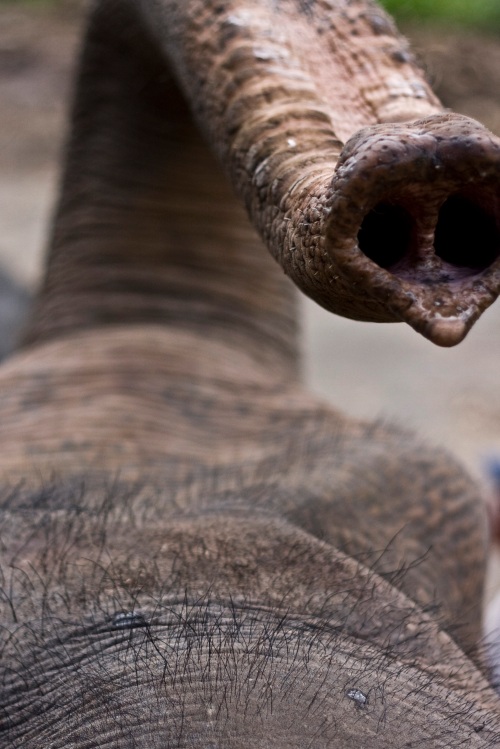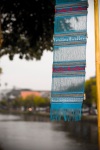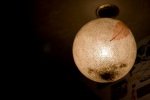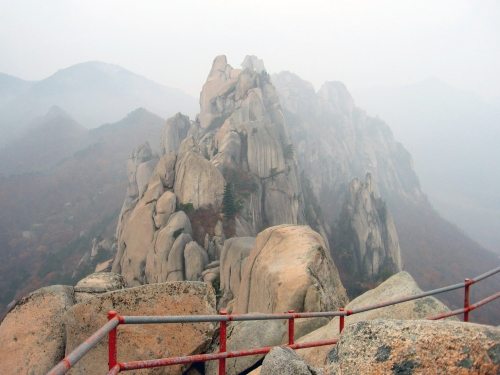After twelve hours and one free meal (at what I deduced to be a Thai rest stop), I had arrived in Chiang Mai — at 5:30 in the morning. I had actually slept pretty well on the double-decker tourist bus, but tourist attractions (except for maybe some seedier ventures) aren’t open at that time of day. I checked into my room and conked out for a few hours before exploring the town.
While it isn’t the sprawling metropolis Bangkok is, Chiang Mai still has plenty of places to wander. For starters, the city, founded in 1296, has more than 300 wats, or Buddhist temples — supposedly about the same number as the nation’s capital. It seems like there’s a wat on every other block in the moat-surrounded city center, which only buttresses Chiang Mai’s reputation as Thailand’s cultural center. While it would be easy to loiter in and out of random temples, I asked the staff at my guest house to point out the important spots to see. On my map they circled Wat Chiang Man, Wat Phra Sing and Wat Chedi Luang.
After intentionally losing myself among the streets of guest houses, tourist agencies and food stands, I decided to meander toward Wat Chiang Man. Constructed in the 13th century, Wat Chiang Man is the oldest temple in Chiang Mai, so I had some pretty grand expectations — especially since the weather had turned sour with downpours throughout the day. Unfortunately, the wat was being renovated, so scaffolding and tarps surrounded the premises and left me with little to see. Wat Chedi Luang, dating back to 1401, and Wat Phra Sing, built in 1345, were, however, quite impressive.
I spent the next two sunny days on a trekking tour through a jungle about an hour outside Chiang Mai. It was the typical tourist package: two days with one night in a native Thai village, complete with elephant ride, waterfall viewing and bamboo rafting. We started with the elephant ride — an hour-long loop through trees and fields along with stands selling bananas for the elephants. It definitely felt kitchy, but the elephants seemed really sweet even though they were probably bored from walking the same path day after day. Every so often, my elephant would stop and curl its trunk over its head in hopes of finding a banana reward from me or my riding partner.
After the ride and lunch, we set off on a hike up a mountain to a Karen village, where we would spend the night. Our trekking guide, who called himself Mr. Ton, threw together a scrumptious dinner, which came with a show. The children of the 200-person village sang traditional village songs for us and then asked us to sing songs from our respective countries. I couldn’t think of one (I was prepared to go with the national anthem), but the Canadian sitting next to me suggested “Take Me Out to the Ballpark.” How un-American of me to forget that one.
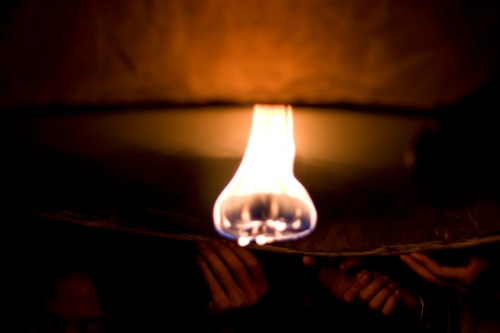
The khom fai (hot-air lantern) is one of the coolest things in Thailand. After it floats away, it looks like a new star.
After lighting a khom fai (hot-air lantern) with the children and listening to some out-of-tune cover songs from Mr. Ton, the 10 of us in our tour group retired to our single hut, equipped with thin sleeping bags, blankets and mosquito nets. The sleep was great — except for the mosquitoes, cold air and the roosters that decided sunrise was time to wake up.
The next day consisted of hiking down the mountain and riding a bamboo raft after lunch. One would imagine a bamboo raft to be a slow, pleasant ride — unless you’re one of the ones driving it. Each raft had a Thai guide (ours being a 12-year-old boy) and a tourist pushing it along with — what else? — bamboo shoots. I happened to be that tourist on my raft, but it wasn’t too bad. Every so often the guide/boy had to turn around and tell me which side to be pushing so that we didn’t die. I still can’t believe they put our lives in the hands of a 12 year old.
Chiang Mai was easily the most adventurous portion of my sweep through Thailand. It was also the part of the trip I was traveling solo, but I had plenty of company along the way — people at the guest house and those I met on the tour. Also, Chiang Mai isn’t so big that I ever felt lost in the expanse of the city. I was quite comfortable traversing the streets aimlessly. After essentially five days of constant movement, though, I was ready to sit down and relax…and what better place for that than the beach?
Up next: Bottle Beach, Koh Phangan.
[click images to enlarge]




